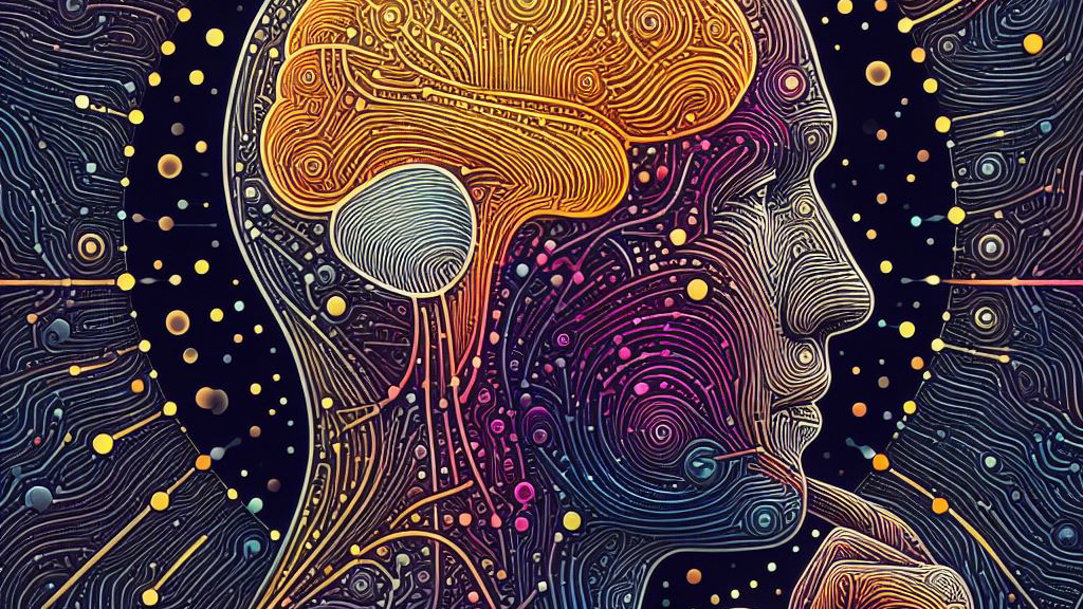How Copilot works, technically speaking
NOVEMBER 21, 2023
3 MIN READING

Credit: Designer in Copilot
Update January 23, 2024: At Microsoft, we are always updating and testing features to offer our users the best possible experiences as we experiment with new approaches to functionality. To improve the user experience and streamline our tools that empower creativity, Bing Image Creator is now Designer and Bing Chat is now Copilot. Create wow-worthy images with your words and AI with Designer, and try Copilot, your AI-powered search assistant for the web.
In the fast-evolving digital era, Copilot stands as a testament to Microsoft's prowess at harnessing the potential of artificial intelligence. To truly appreciate its capabilities, it's vital to understand the foundational elements such as the large language model, or LLM, AI. Get to know the tech behind Copilot’s conversational, generative expertise and learn about key features you can enjoy.
LLM AI: The brain behind Copilot
The term large language model might sound intricate, but its essence is simple. Picture a colossal digital library brimming with billions of words, ideas, and contexts. Now, imagine having a super librarian who can fetch the most fitting piece of information almost instantly. That's how LLM AI works.
AI types and categories
Artificial Intelligence can be divided into different types based on its capabilities and functionalities. How does generative AI work, and what are other types of AI? Let's delve into that.
Narrow AI vs. general AI
Narrow AI, also known as weak AI, is designed to perform specific tasks or functions. It excels in a particular area but lacks the ability to generalize beyond its specialized domain. Conversely, General AI, or strong AI, aims to replicate human-level intelligence, capable of understanding, learning, and performing any intellectual task a human can. Understanding how does AI work in these contexts is crucial.
Supervised, unsupervised, and reinforcement learning
AI systems learn and improve their performance through various learning methods. Supervised learning uses labeled data for predictions or classifications. Unsupervised learning identifies patterns and relationships within unlabeled data. Reinforcement learning trains an AI model through trial and error, learning from feedback and rewards.
Natural language processing (NLP)
At its heart, AI like Copilot operate on neural networks that mimic the human brain's structure. These networks allow AI to learn from vast volumes of data. Based on each person’s interactions and new online content, this continuous learning ensures that the platform becomes smarter and more efficient over time—understanding, interpreting, and generating human language. That means that Copilot’s functionality increases every time you use it!
How does AI work in crafting responses?
When you prompt Copilot with a question or statement, it performs the following actions to give you a response:
- Interpret the input. The LLM AI analyses your words, understanding context and nuances.
- Search the knowledge base. Copilot searches for relevant patterns, data, or context.
- Craft the answer. The AI crafts a contextually fitting, coherent reply, ensuring clarity and relevance.
- Deliver the response. Copilot offers you a well-articulated answer almost instantly.
The AI powering Copilot: OpenAI’s ChatGPT-4, Prometheus, and DALL-E 3
Copilot is powered by a one-of-a-kind AI trio. Each brings unique functionality to Copilot’s conversational, generative, AI-powered searches:
- OpenAI’s ChatGPT-4. This model of Open AI’s ChatGPT LLM is customized for search, optimized for speed, and equipped to generate creative text in any form you can imagine.
- Microsoft’s Prometheus model. This is Microsoft’s proprietary model for working with the OpenAI LLM. It’s specially designed to increase the timeliness, relevance, and safety of your AI-powered search responses.
- DALL-E 3. This is OpenAI’s generative, text-to-image neural network. DALL-E 3 goes beyond the language-bound LLMs and takes AI-generated content into the visual realm.

Credit: Designer in Copilot
The diversified AI tapestry: Image and text generation
Copilot can generate unique text and comes with built-in Designer, meaning you can prompt this AI to churn out unique images, too.
Text generation: More than words
Copilot is tailored for content creation, assisting users in drafting text that ranges from professional emails to whimsical sonnets. Copilot is fine-tuned for textual contexts, grammar precision, and stylistic recommendations. When you ask Copilot to write a speech or bedtime story, it crafts the content you need.
Designer: AI-driven artistry
Also built right into Copilot, Designer uses the DALL-E 3 generative, visual AI model, which searches a database of text and image pairs to interpret requests and generate images. DALL-E 3 is equipped with the same text-analysis capabilities as Copilot’s LLM, but those abilities are extended to include visual search and production. When you ask Copilot to create an image for you, Designer makes it happen.
Copilot: The future of search is here
With all of these built-in AI tools, Copilot offers a conversational, intelligent search that transforms the possibilities of what a web search engine can be. You’ll receive thorough answers to your search questions, which can include videos, reviews, maps, and more. You can ask Copilot to take on various tasks, too. From comparing products for a present or composing an email to making a spreadsheet of sports teams with several columns of data or generating a perfect background image for your social media profile, AI-powered Copilot can help you complete tasks large and small.
Copilot, with its underpinnings in OpenAI's ChatGPT-4, its unique Prometheus model, and the visual prowess of DALL-E 3, represents the zenith of conversational AI. Copilot’s text generation and image-creating Designer showcase the vast potential and diversity of AI applications. As we stand at this junction of technological advancements, Copilot serves as a testament to the transformative power of AI in reshaping our digital world.
Try Copilot today to see what conversational, generative AI can do for you.
- Features and functionality subject to change.
- Articles are written specifically for the United States market; features, functionality, and availability may vary by region.
- Feature availability and functionality may vary by device type, market, browser version, or account type.
Products featured in this article

Copilot

Copilot mobile app
Frequently asked questions
-
Artificial intelligence (AI) involves programming machines to simulate human intelligence. It's about creating computer systems capable of tasks that would typically require human cognition, such as visual perception, speech recognition, decision-making, and problem-solving.
-
Generative AI models are trained on a dataset and then use that training to generate new content that is similar to the training data. This can be used to create realistic images, design new molecules for drug discovery, or even write music.
-
AI works by processing vast amounts of data and using algorithms to analyze patterns and make decisions or take actions based on that data. Machine learning, a subset of AI, allows machines to learn from experience and improve their performance over time without explicit programming. Deep learning, another subset of AI, involves training artificial neural networks with large data sets to recognize and interpret complex patterns.
-
General AI - 3 MIN READ
Copilot and Bing’s AI features
Experience the internet in a whole new way with these AI-powered features.
-
General AI - 3 MIN READ
Do more with Copilot
Learn how you can use GPT-4 for free with Copilot, your AI-powered search assistant for the web.
-
Art & Creativity - 2 MIN READ
How to Create AI Art with Copilot
Use AI to create and digitalize the art you’ve been envisioning.




SHARE: